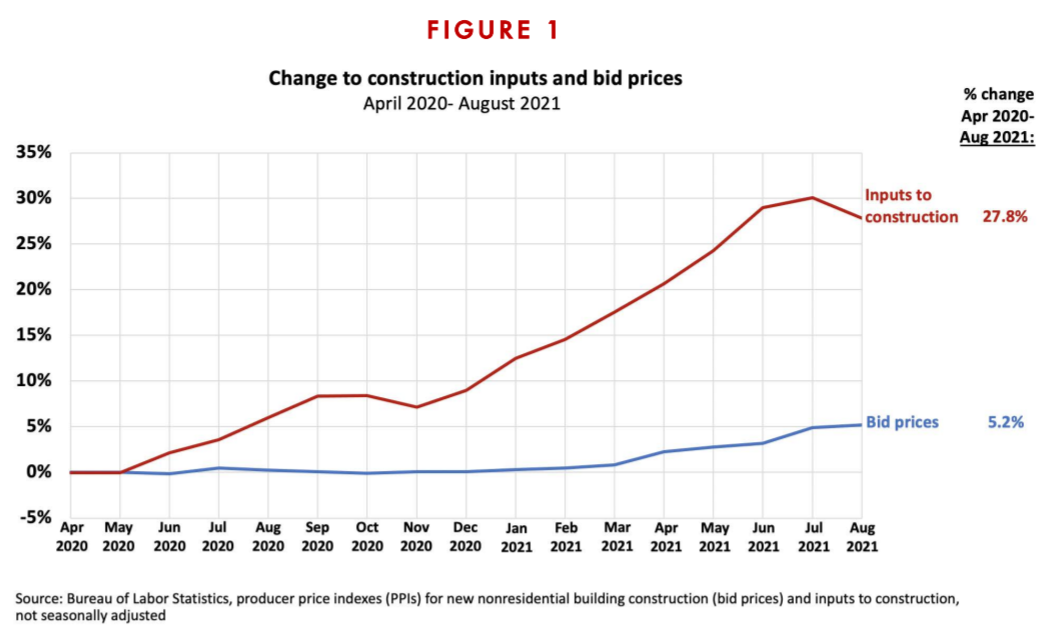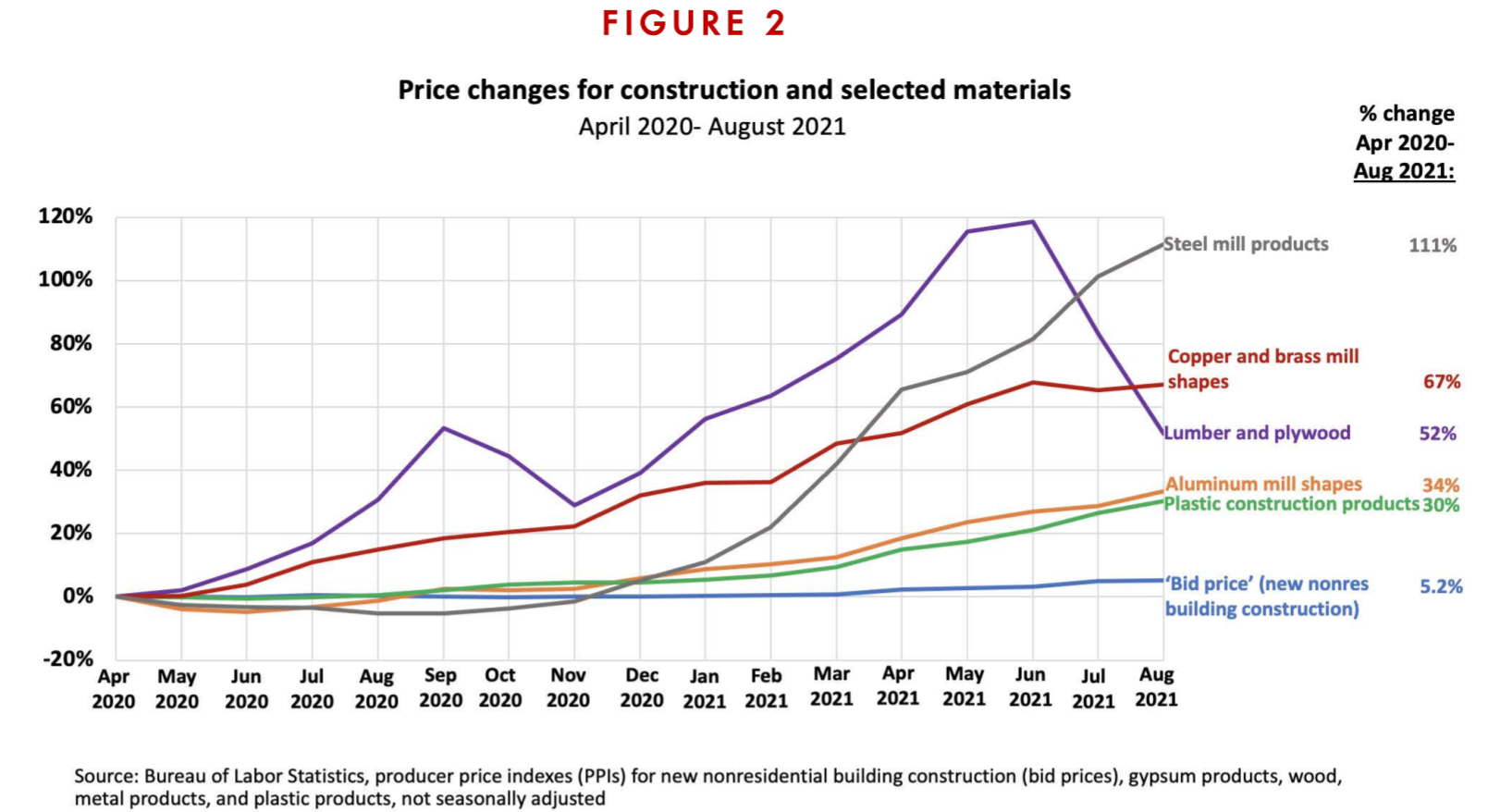Construction Material Price Increases
Volatility is synonymous with risk, and rising material prices are dominating the conversations in the construction industry right now.

Material costs have grown by 27.8% since May 2020, according to the AGC Construction Inflation Alert, but bid prices have only accounted for 5.2% of the increase. Lumber, for example, saw a 120% rise in a year and then settled at 52%. Steel mill products have risen by more than 111% in a short period of time, and it appears to be still climbing.

So, who bears the risk? Most GC’s, trades and material suppliers operate on narrow margins where increases like these could be detrimental to the industry. In this current reality, how do we manage through these times and remain profitable?
At the Arizona Builders Alliance Conference, Mike Holden, an attorney with Holden Willits gave some great advice to the construction industry on how to manage this risk:
- Read the fine print in the price quotes from your suppliers to know how long the price quotes are guaranteed
- Talk to the upchain party to discuss the risk whether they be an owner to a GC or a contractor to a material supplier
- Include an allowance in your bids to provide additional funds for potential increases
- Buy materials early to allow you to capture the price before it increases, but don’t forget to review your installation floater for proper insurance coverage
Holden also recommends contractors use the Consensus Docs form 100.1 Amendment No. 01. For those not familiar with Consensus Docs, it is an alternative to the AIA contract that was created with a consortium of construction parties and endorsed by the ABC and AGC. The Amendment No. 01 is an agreement with the owner so that “each party is entitled to an equitable adjustment for an increase or decrease in this baseline price subject to timely notice.”
Ron Wilson from Mortenson added that “it is time to loosen our grip on lean” because the Just-In-Time deliveries and processes don’t leave the project with any margin of error in delays, shipments or availability of skilled labor.
Storms draw something out of us that calm seas don’t. We’re in a storm of price fluctuations right now in our industry. The good news is that the construction economic indicators show significant growth, but to earn the profits along the way, contractors need to manage the material cost risk today.
About the Author
Share This Story
Related Blogs
OSHA Announces Top 10 Violations for 2025
OSHA recently revealed its top 10 most frequently cited standards in the 2025 fiscal year using preliminary data. This information is valuable for businesses of all kinds, as it helps them identify common exposures that affect their workforce and gives them the information they need to plan their compliance programs.
Cyber Hygiene for Schools: Teaching Digital Safety to Students
Cyber hygiene for schools is more important than ever in today’s digital learning environment. Teaching digital safety to students not only protects their personal information but also strengthens overall school cybersecurity. With increasing online access in classrooms, cyber hygiene for schools must become a routine part of curriculum planning and student behavior expectations.
Mental Health Benefits Go Mainstream: What Employers Need to Know
Once considered a niche offering or a reactive add-on, mental health benefits have now moved to the center of the employee experience. In 2025, nearly half of U.S. employers offer some form of mental health support beyond traditional EAPs—a sharp rise from just 30% in 2023. This shift isn’t just cultural; it’s strategic.









